As an internal communicator, you play a pivotal role in shaping your workplace culture. Whether it’s measuring employee sentiment, improving employee engagement, or refining leadership strategies, pulse surveys are your secret weapon. Read along as we explore 15 types of pulse surveys that will garner real-time, actionable feedback.
How often have you wondered if your employees feel aligned with the company’s vision? Or if employees are satisfied with their roles? In today’s dynamic work environment, organizations are constantly adapting to new challenges—from implementing hybrid work models to navigating economic uncertainty. To stay agile, you need real-time insights into the workforce.
Collecting frequent feedback helps to identify potential issues before they escalate and fosters a more engaged, connected team. This is where the various types of employee pulse surveys come in.
Throughout this guide, we’ll discuss the top types of pulse surveys and how they can empower your internal communications strategy.
See how ContactMonkey’s employee survey features make it quick and easy to create, send, and track your internal email surveys.
Take a self-guided tour of ContactMonkey
See how our key features can streamline your internal communications.
Take product tour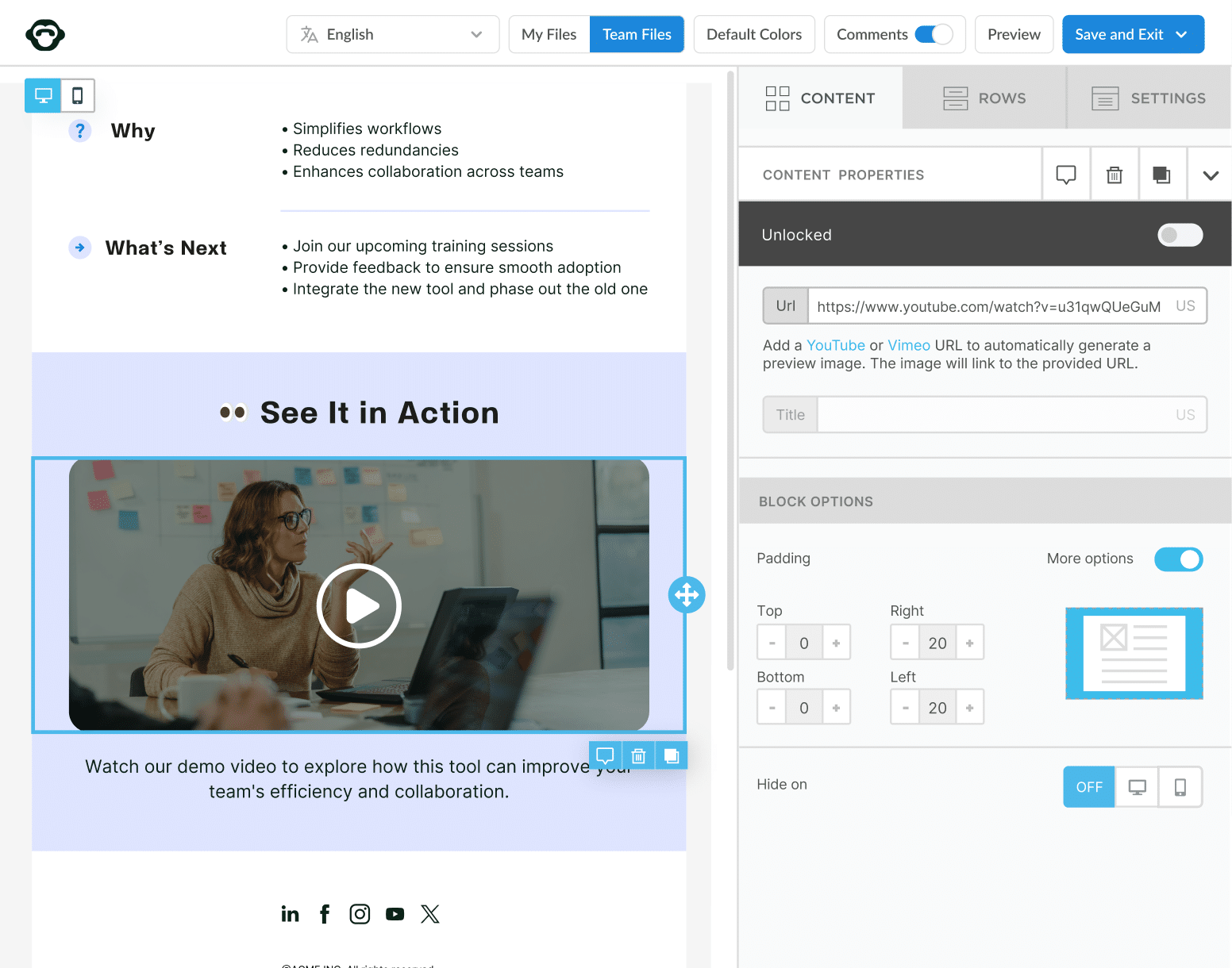
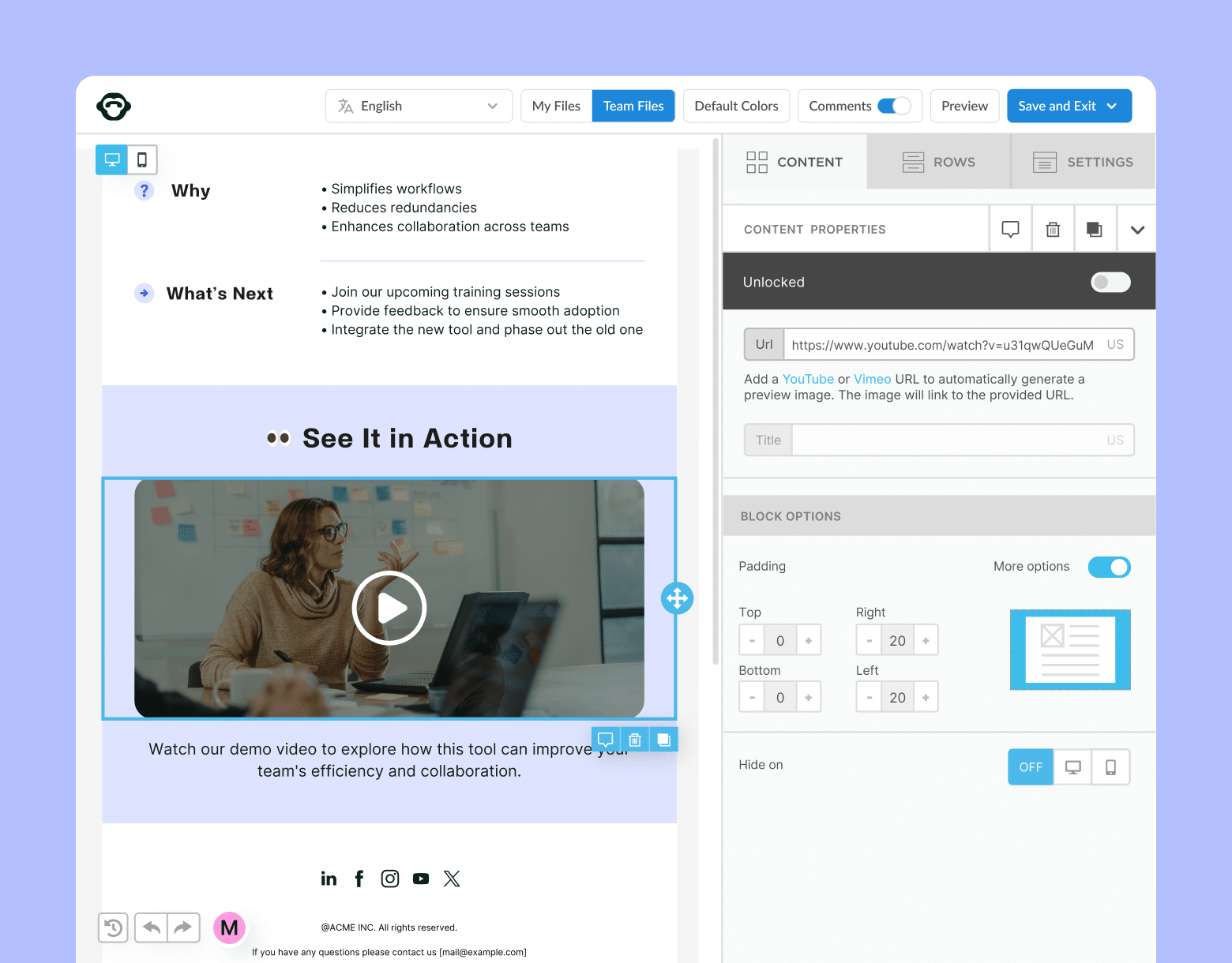
What is an Employee Pulse Survey?
An employee engagement pulse survey is a short, frequent survey designed to capture immediate feedback from employees on various aspects of their work experience and organizational culture. A wellness check-in or onboarding survey is a classic pulse survey example tailored for specific stages of the employee lifecycle.
What is the Purpose of Pulse Surveys?
The primary purpose of a team pulse survey is to provide organizations with real-time insights into employee sentiments, enabling leaders to make informed decisions. These regular or weekly pulse surveys can help organizations track trends, identify issues, and measure the effectiveness of initiatives, employee engagement, and employee satisfaction over time.
🎁 BONUS: Read the top ten benefits of employee pulse surveys for more on the purpose of pulse surveys.
Why Companies Need a Strategic Pulse Survey Action Plan
A well-thought-out action plan ensures you’re using the right pulse survey types at the right time. With multiple types of employee pulse surveys, you can gather comprehensive data to improve various aspects of the employee experience. Deploying different types of pulse surveys allows for diversified data, different types of feedback to be collected, and even varied participation rates.
Getting strategic with key pulse survey types allows organizations to gather feedback from all levels, creating a comprehensive understanding of the workplace. For example, a business pulse survey can evaluate perceptions of company performance and strategic alignment, while an employee engagement pulse survey focuses on understanding satisfaction and motivation trends.
Using different survey types ensures a more complete picture of the organization, helping leaders identify patterns and prioritize areas for improvement. In short, different pulse survey types provide unique insights. By deploying multiple survey types, you gain a well-rounded understanding of employee engagement, wins and challenges, and overall workplace dynamics.
Start two-way conversations and employee feedback loops
Learn how to engage staff with pulse surveys, content ratings and reactions, custom polls, and more. Ready to send modern emails?
See engagement features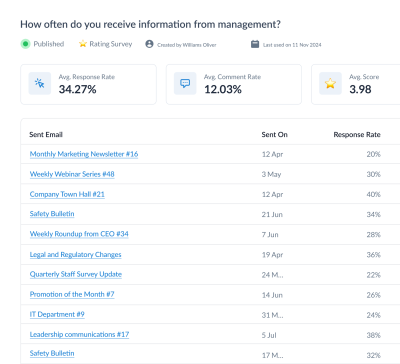
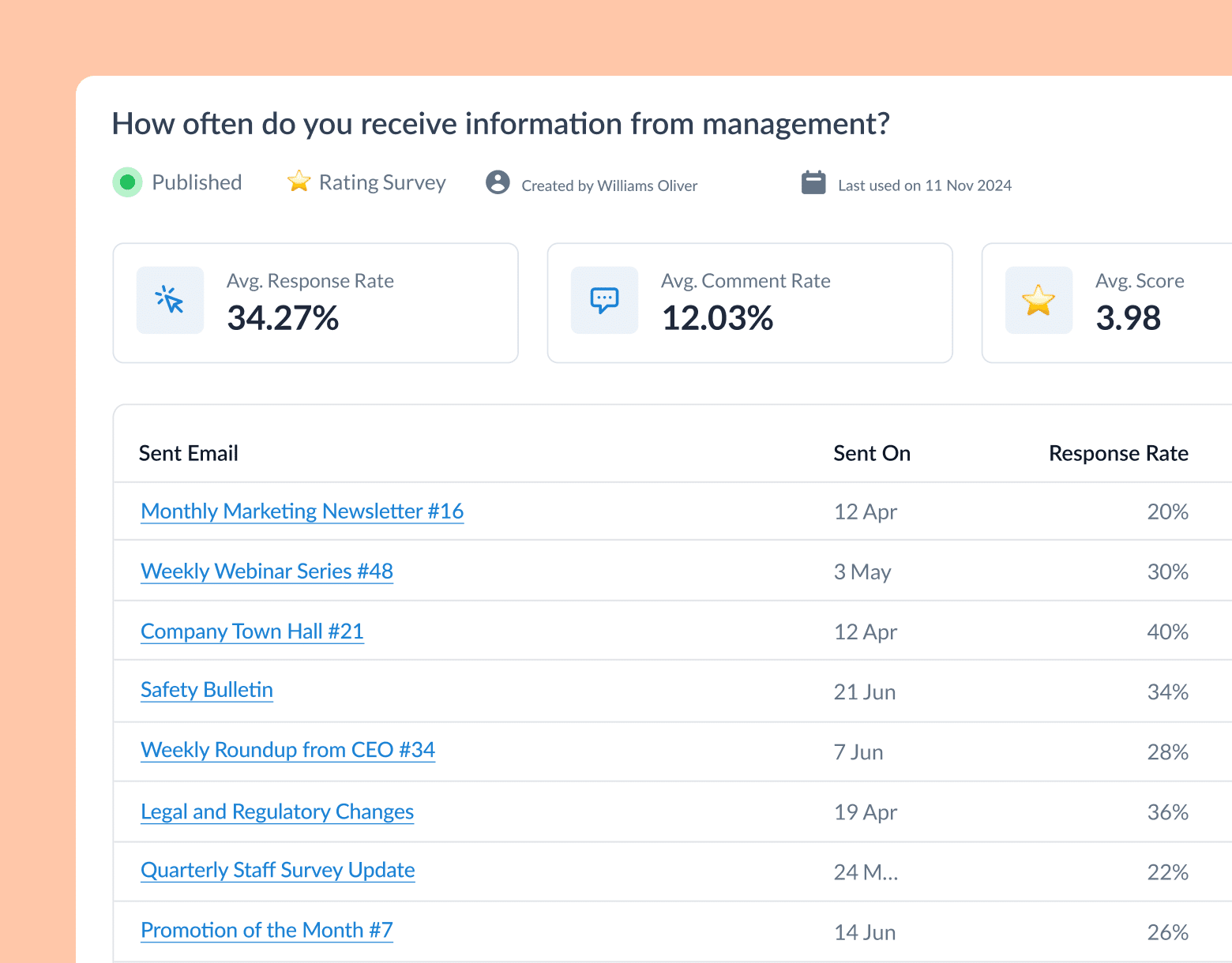
Types of Pulse Surveys Internal Communicators Must Implement
To truly understand and support your workforce, it’s crucial to use a variety of pulse survey types tailored to different aspects of the employee experience. Each survey type serves a unique purpose, providing valuable insights that can drive engagement, improve workplace culture, and enhance leadership effectiveness. By considering the purpose of your survey, you can choose the best pulse survey example to gather relevant feedback effectively
Below, we’ll explore the essential types of pulse surveys every internal communicator should implement, along with practical tips and sample pulse survey questions for each.
1. Employee engagement pulse survey
The employee engagement pulse survey gauges overall satisfaction, motivation, and emotional connection to the organization. It helps to identify areas for improving the work environment.
When to use it: Deploy quarterly or biannually to track engagement trends over time.
Best practices to deploy: Ensure anonymity to encourage honest feedback and use consistent questions to monitor changes.
Sample questions:
- How satisfied are you with your current role?
- Do you feel motivated to perform your best work?
- Do you believe your contributions are valued?
🎁 BONUS: We compiled a list of pulse survey templates for you to better understand the kind of content and design elements to consider when building your pulse surveys.
2. Business pulse survey
A business pulse survey evaluates employee perceptions about organizational performance, strategy alignment, and overall business health.
When to use it: Use during significant organizational changes, such as new initiatives or after financial performance reviews.
Best practices to deploy: Focus on clarity and provide context for the questions to ensure employees understand the survey’s relevance.
Sample questions:
- How confident are you in the company’s future direction?
- Do you feel informed about the organization’s goals?
- How would you rate the effectiveness of recent business changes?
Create and send employee surveys for feedback
Engage staff with pulse surveys, eNPS surveys, reusable surveys, custom polls, and more. Ready to send modern emails?
Explore survey features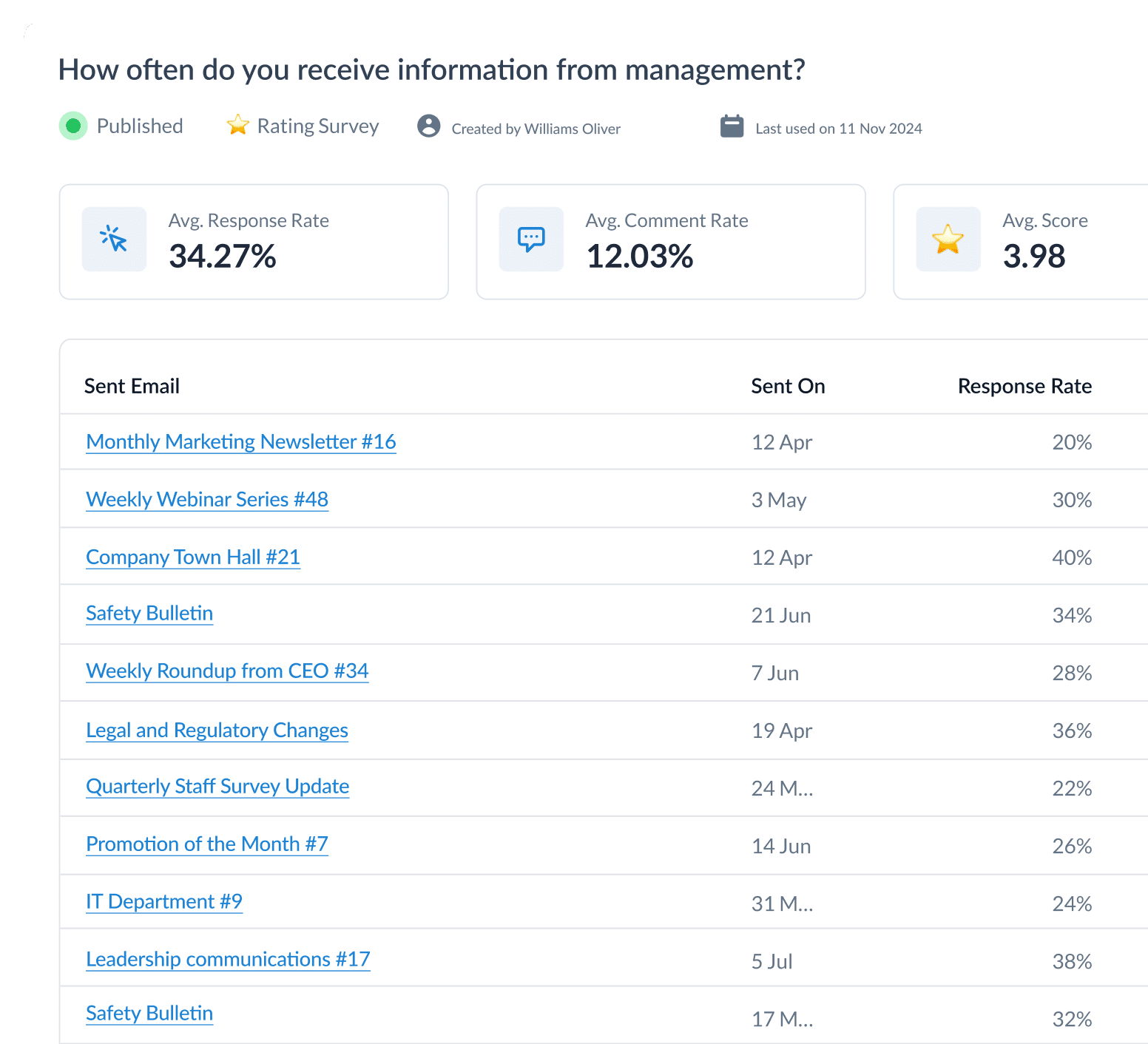

3. CEO pulse survey
The CEO pulse survey gathers feedback specifically on leadership visibility, communication, and decision-making effectiveness.
When to use it: Deploy after major communications or organizational changes led by the CEO.
Best practices to deploy: Keep the survey concise and focused on leadership-related topics.
Sample questions:
- Do you feel the CEO communicates effectively?
- How visible is the CEO to employees?
- Do you trust the decisions made by the CEO?
4. CFO pulse survey
A CFO pulse survey targets financial leadership, assessing transparency, communication, and employees’ understanding of financial priorities.
When to use it: Use after financial updates or budgeting cycles.
Best practices to deploy: Provide clear definitions and context for the financial metrics discussed, or that you’d like to survey on.
Sample questions:
- Do you feel well-informed about the company’s financial health?
- How transparent is the CFO regarding financial decisions?
- Do you understand how your role impacts the organization’s financial goals?
5. Onboarding pulse survey
The onboarding pulse survey collects feedback from new hires to improve the onboarding experience and ensure smooth transitions.
When to use it: Send within the first 30, 60, and 90 days of a new hire’s tenure.
Best practices to deploy: Segment questions by stages of onboarding and use a mix of open-ended and multiple-choice questions.
Sample questions:
- How would you rate your onboarding experience so far?
- Were your initial job expectations met?
- Do you feel equipped with the necessary tools and information?
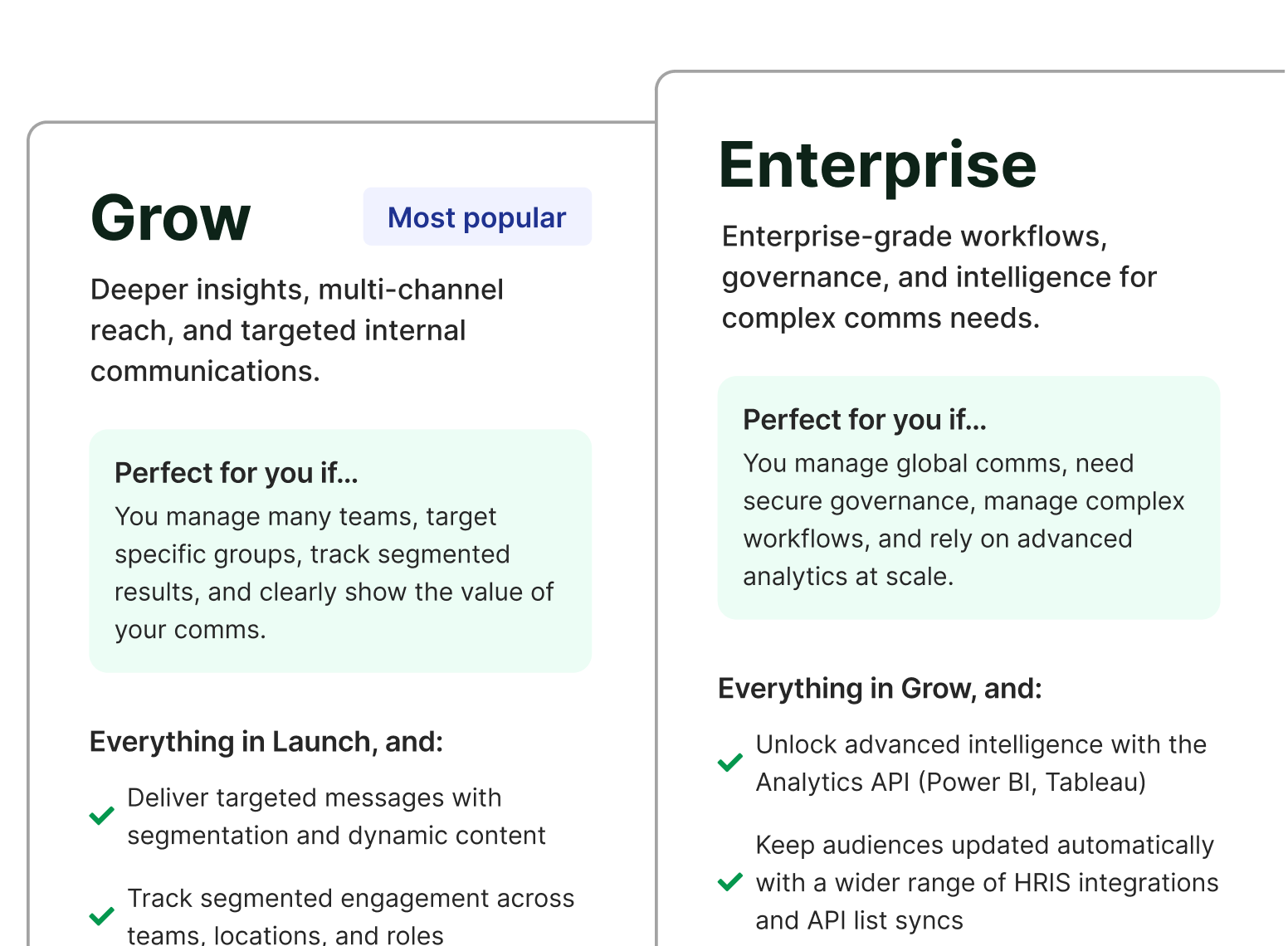
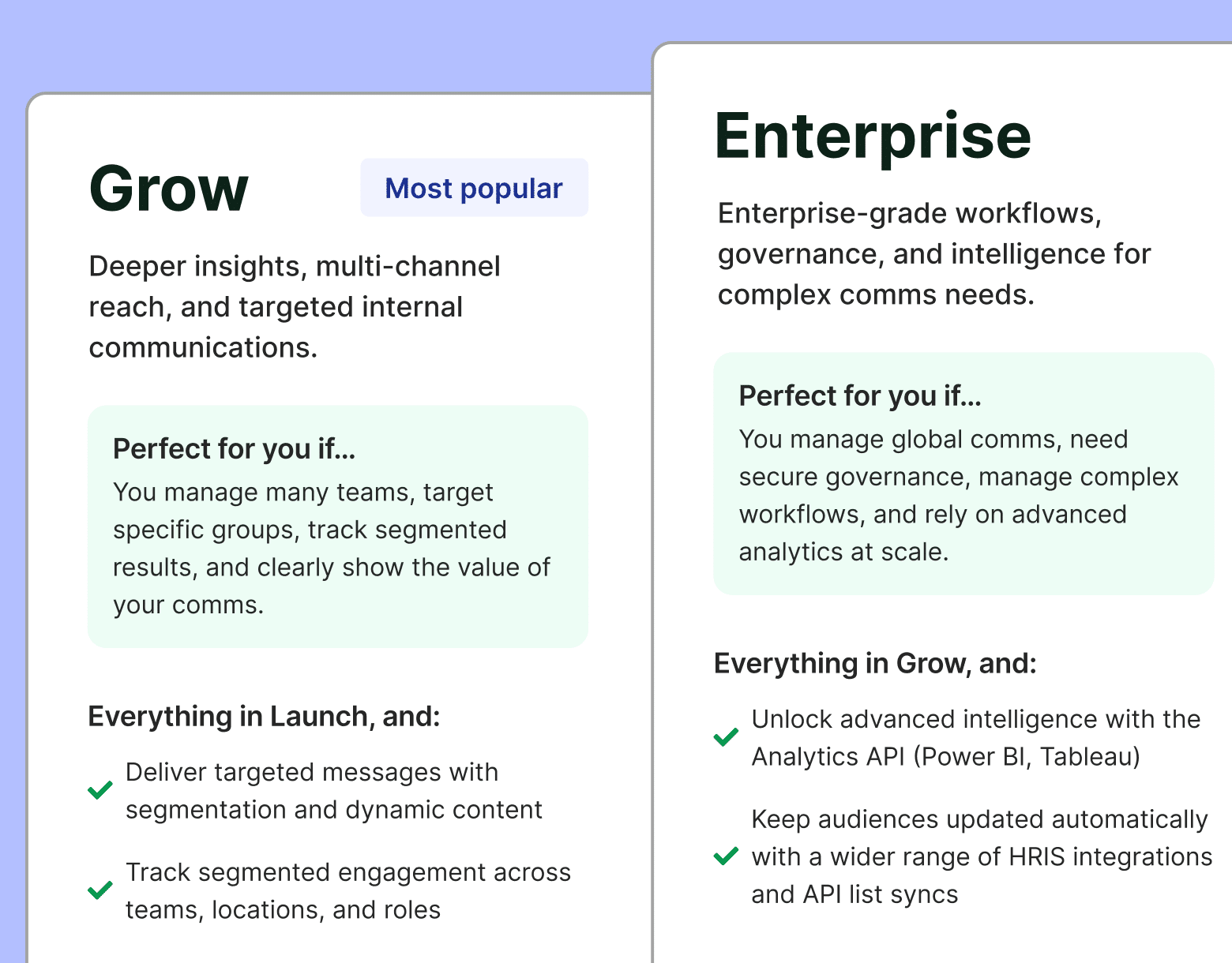
6. Exit pulse survey
Exit pulse surveys capture feedback from employees leaving the organization to understand their reasons and identify improvement opportunities.
When to use it: Deploy during the employee’s last week.
Best practices to deploy: Maintain confidentiality and focus on constructive insights.
Sample questions:
- What prompted your decision to leave?
- How would you describe your experience with leadership?
- What could we have done to improve your experience?
🎁 BONUS: If you’re looking for new ways to gather feedback through pulse surveys, our article on how to use pulse surveys in your internal comms will help.
7. Diversity, equity, and inclusion (DEI) pulse survey
This pulse survey survey type assesses employees’ perceptions of inclusivity and the effectiveness of DEI initiatives.
When to use it: Conduct biannually or after launching new DEI initiatives.
Best practices to deploy: Use inclusive language and ensure broad participation across all employee groups.
Sample questions:
- Do you feel the company fosters an inclusive environment?
- Have you observed improvements in our DEI efforts?
- Do you feel comfortable expressing your identity at work?
8. Change management pulse survey
A change management pulse survey evaluates employees’ reactions and adaptability during organizational changes.
When to use it: Deploy before, during, and after significant changes.
Best practices to deploy: Clearly communicate the survey’s purpose and focus on real-time feedback.
Sample questions:
- How well do you understand the recent changes?
- Do you feel supported during this transition?
- What challenges have you experienced with the new processes?
Watch ContactMonkey LIVE in action
Join live demo
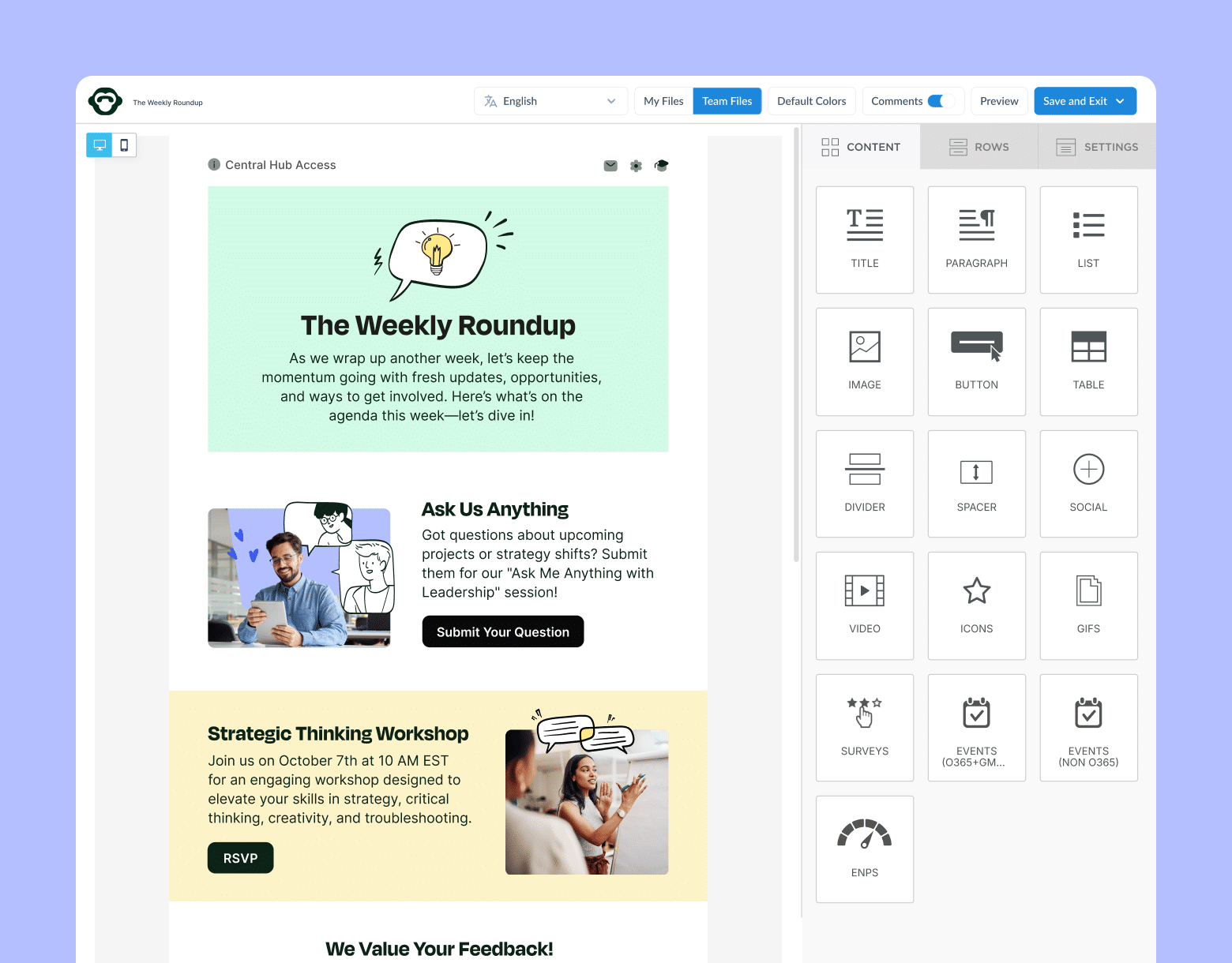
9. Wellness pulse survey
The wellness pulse survey measures employees’ perceptions of their physical, mental, and emotional well-being.
When to use it: Use regularly, such as quarterly, to track wellness over time.
Best practices to deploy: Include resources for support alongside the survey to show care and commitment.
Sample questions:
- How would you rate your overall well-being?
- Do you feel the company provides adequate wellness resources?
- How often do you feel stressed or overwhelmed at work?
10. Team dynamics pulse survey
This type of pulse survey focuses on team collaboration, communication, and interpersonal relationships.
When to use it: Deploy after team restructuring, project completion, or periodically to improve team cohesion.
Best practices to deploy: Encourage open-ended feedback to uncover nuanced team dynamics.
Sample questions:
- How effective is communication within your team?
- Do you feel your team works well together?
- How supported do you feel by your team members?
11. Tech tool pulse survey
A tech tool pulse survey evaluates employees’ satisfaction with the technology and tools they use daily, ensuring these resources are effective and user-friendly.
When to use it: Deploy after introducing new tools, update existing ones, or periodically assess ongoing tool effectiveness.
Best practices to deploy: Include questions about usability, impact on productivity, and any challenges faced. Ensure you gather feedback from all departments for a holistic view.
Sample questions:
- How effective are the current tech tools in helping you perform your job?
- Have you experienced any challenges or issues with the tools provided?
- Do you feel the technology meets your daily work requirements?
🎁 BONUS: For your own tech tools to consider, here are the 10 pulse survey tools that can help you better execute IC initiatives.
Take a self-guided tour of ContactMonkey
See how our key features can streamline your internal communications.
Take product tour

12. Career development pulse survey
This pulse survey type measures employees’ perceptions of their career growth opportunities, including access to training and recognition.
When to use it: Conduct semi-annually or after launching new development programs.
Best practices to deploy: Focus on actionable insights by including specific questions on available programs and recognition practices.
Sample questions:
- Do you feel you have opportunities to advance your career here?
- How effective are the training programs provided?
- Do you feel recognized for your achievements?
13. New hire satisfaction pulse survey
This pulse survey tracks satisfaction levels among recent hires to ensure they are adapting well to their roles and the organization.
When to use it: Deploy within the first three months of employment.
Best practices to deploy: Keep questions concise and directly related to their initial experience.
Sample questions:
- How satisfied are you with your experience so far?
- Was your role clearly explained during the hiring process?
- How would you rate your support from your team and manager?
14. Culture pulse survey
A culture pulse survey gathers feedback on the overall workplace environment, helping to identify strengths and areas for improvement.
When to use it: Deploy annually or biannually to track cultural shifts.
Best practices to deploy: Ensure diverse participation across departments and use insights to shape cultural initiatives.
Sample questions:
- How would you describe the company culture?
- Do you feel a sense of belonging at work?
- Are the company’s values reflected in your daily work experience?
15. Leadership pulse survey
This survey gathers feedback on leadership performance, communication, and approachability, helping to enhance leadership effectiveness.
When to use it: Use biannually or following significant leadership changes.
Best practices to deploy: Focus on anonymity to ensure honest and constructive feedback.
Sample questions:
- Do you feel leadership communicates effectively?
- How approachable is your manager or senior leadership?
- Do you trust the decisions made by leadership?
How to Create and Send Pulse Surveys with ContactMonkey
Creating and sending different types of pulse surveys with ContactMonkey is quick and effective. Here’s how:
- Keep it short: Limit your survey to 2-5 focused questions.
- Embed directly: Use ContactMonkey to seamlessly embed surveys in internal emails.
- Use engaging formats: Add emoji reactions, star ratings, or text fields for easy feedback.
- Track results: Monitor real-time analytics to measure response rates and engagement for a full picture of employee pulse survey results.
For a detailed guide, check out our post on creating a pulse survey, and you’ll also get some tips on pulse survey design!
Ready to learn more about collecting employee feedback? Book a free demo with one of our experts and explore the power of employee engagement!



